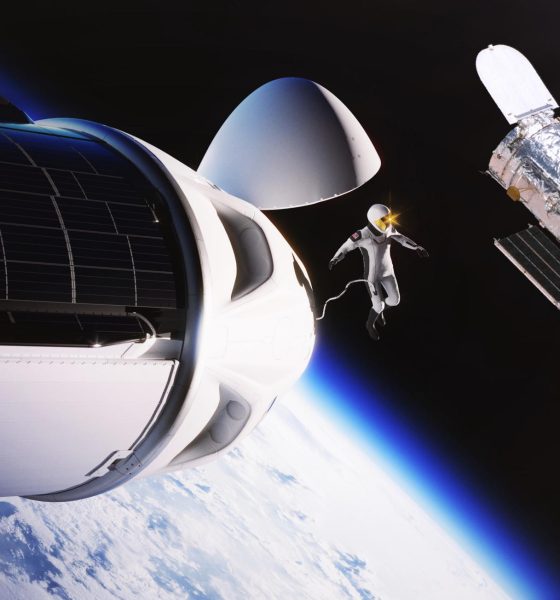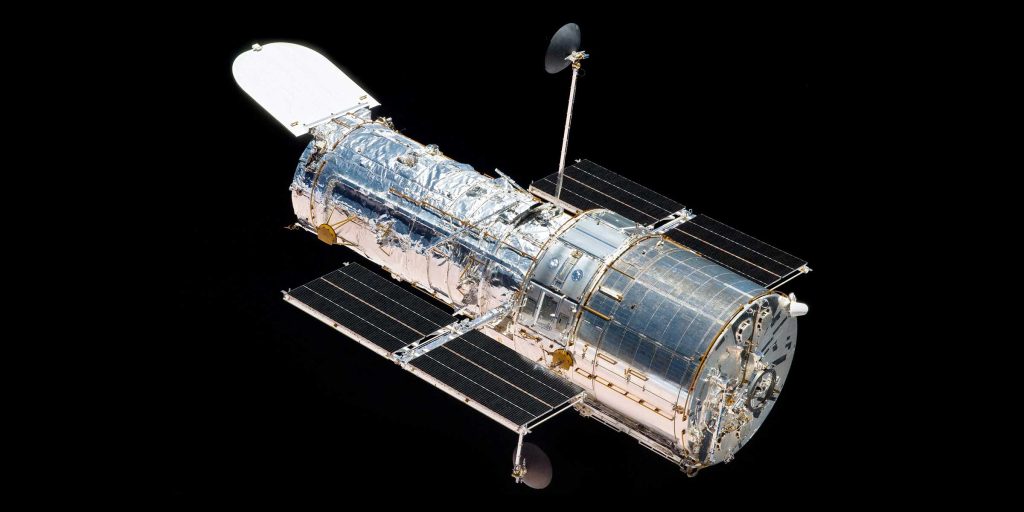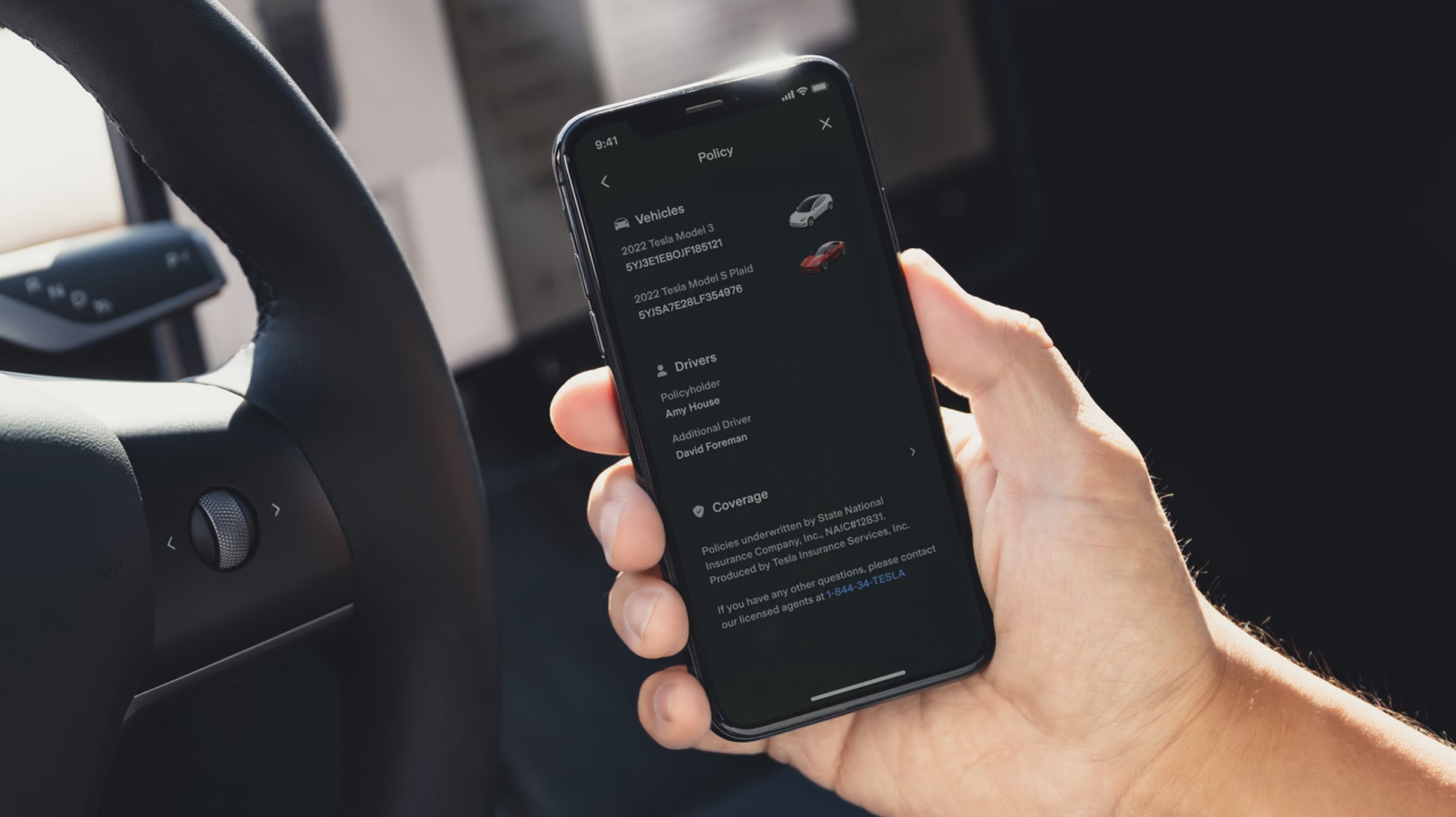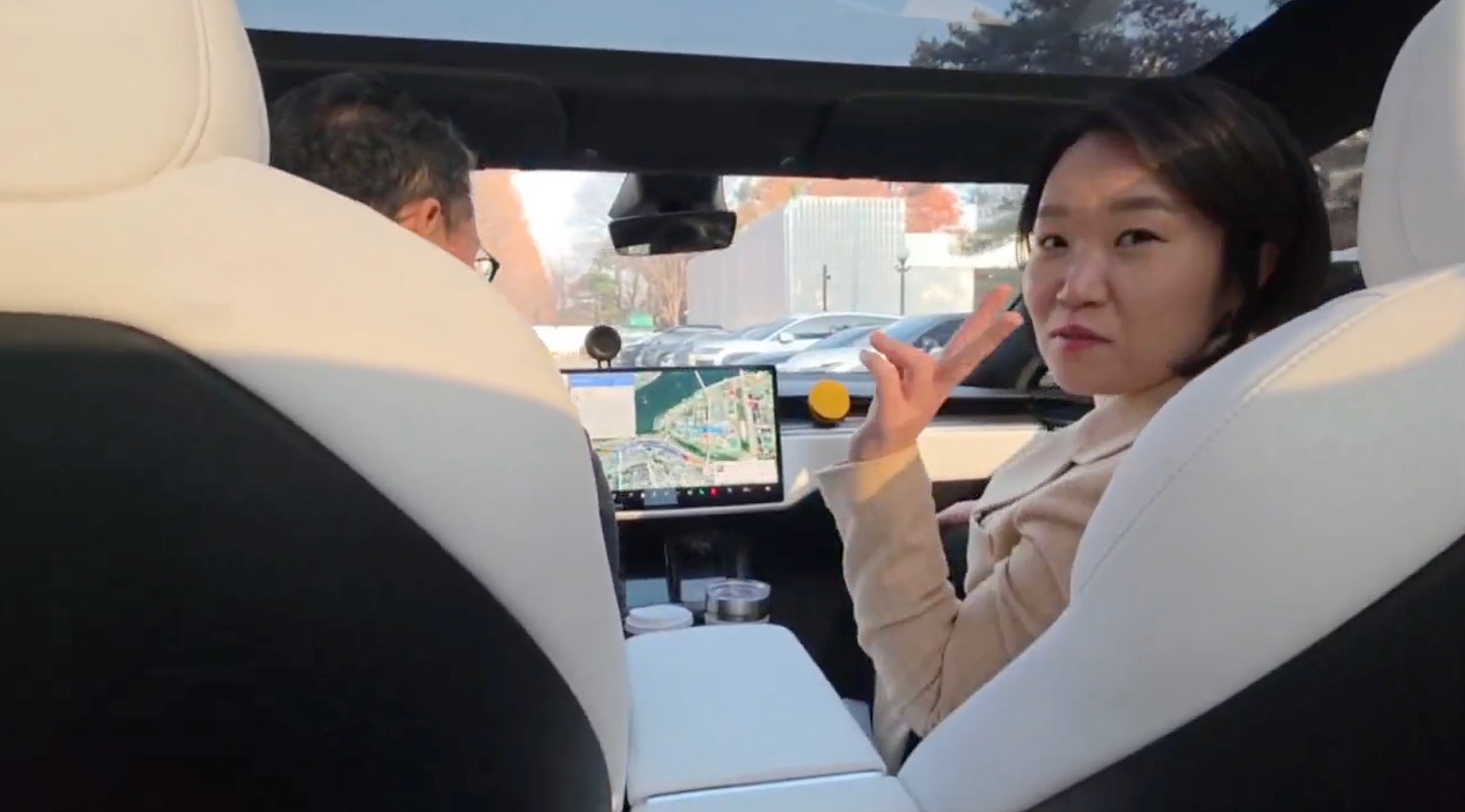

News
SpaceX wants to boost Hubble Space Telescope’s orbit with Dragon spacecraft
NASA and SpaceX have signed a Space Act Agreement to study the feasibility of boosting the orbit of the iconic Hubble Space Telescope, potentially ensuring that the highly successful observatory will remain operable well into the middle of this century.
Thanks to three servicing missions completed in the 1990s and 2000s, Hubble remains highly productive more than 32 years after its launch. NASA believes that that will remain the case until at least the late 2020s or 2030s. However, many components of the telescope have spent decades in the unforgiving environment of space, raising unsurprising concerns about their longevity.
More importantly, the inexorable march of time, gravity, and Earth’s atmosphere mean that Hubble is guaranteed to eventually reenter that atmosphere and burn up without intervention. That demise could come as early as the mid-2030s, but SpaceX thinks it could help extend the telescope’s viability into the 2050s.
NASA and SpaceX will spend the next six or so months discussing whether it’s possible to use Dragon to boost the telescope’s orbit back to a nominal 600 kilometers (~372 mi). Both parties say that the agreement will also investigate the possibility of Dragon servicing missions, which could be even more significant for Hubble. While a boost that large would likely keep it in orbit for decades to come, there’s no guarantee the telescope would remain functional to take full advantage of the extra time it would have.
During the fifth and final Space Shuttle servicing mission, NASA astronauts installed a docking adapter (Soft Capture Mechanism) on the Hubble Telescope. Although no concrete plans existed for any additional servicing missions, the forward-facing installation of that adapter has made this feasibility study possible.
In theory, that docking adapter could make boosting Hubble’s orbit far more feasible, safe, and affordable than a Shuttle-style crewed servicing mission. SpaceX’s Cargo Dragon 2 spacecraft has the same autonomous docking capabilities its crewed sibling has and costs less to launch and operate, so it’s not inconceivable that an uncrewed Dragon could autonomously dock with Hubble and boost its orbit. Jessica Jensen, SpaceX’s Vice President of Customer Operations and Integration, says that an uncrewed option will be studied alongside crewed servicing and orbit-boost alternatives.

According to Patrick Crouse, NASA’s Hubble Space Telescope project manager, without a reboost, NASA would need to consider a separate mission to ensure a controlled deorbit of the massive telescope by “the end of the decade.” The study’s targeted boost of “40 to 70 kilometers,” meanwhile, could extend the longevity of Hubble’s orbit by “15 to 20 years,” or well into the 2050s. But as a feasibility study, there’s a chance that it will conclude that using Dragon – crewed or uncrewed – to boost or service HST isn’t feasible. Ordinarily, the most likely outcome would be a conclusion that the project is feasible from a technical perspective but out of reach from a financial perspective.
Enter billionaire and private astronaut Jared Isaacman, who was directly involved in the September 29th press conference. In September 2021, Isaacman – alongside four others – became the first all-private astronaut mission in history to reach orbit. After the spectacular success of Inspiration4, Isaacman’s relationship with SpaceX has become even closer. In early 2022, the pair announced a new endeavor – the Polaris Program – that intends to conduct at least two or three more private astronaut launches over the next few years.
Expanding the scope of their joint ambitions, the Polaris Program intends to debut the world’s first privately developed EVA spacesuit, test spacecraft-to-spacecraft communications using Starlink’s network of space lasers, and culminate in the first crewed launch of SpaceX’s next-generation Starship rocket. On its own, the decision to privately fund and develop an EVA suit and pursue the ability to conduct EVAs out of Crew Dragon represents a major leap forward for SpaceX and private spaceflight if realized.
But crucially, when asked about the synergies between the Polaris Program, SpaceX, and NASA, Isaacman revealed that he and SpaceX are willing to undertake a sixth Hubble servicing mission more or less pro bono, “with little or no potential cost to the government.” According to Isaacman, it’s possible that “the study could result in [a Hubble servicing mission] becoming the second [Polaris Program] mission.”
Polaris Dawn, the program’s first mission, was recently delayed from a late-2022 launch target to March 2023. The four private astronauts assigned to the mission (including Isaacman himself) recently began training for the historic private EVA, which will see two of four astronauts attempt to briefly exit their Crew Dragon spacecraft in new SpaceX-designed suits. With a targeted apogee of 1400 kilometers (~870 mi), the mission will also attempt to break the record for the highest Earth orbit reached by astronauts, and the spacewalk attempt will also occur at a record-breaking altitude of 700 kilometers (~435 mi)

News
Tesla dominates in the UK with Model Y and Model 3 leading the way

Tesla is dominating in the United Kingdom so far through 2025, and with about two weeks left in the year, the Model Y and Model 3 are leading the way.
The Model Y and Model 3 are the two best-selling electric vehicles in the United Kingdom, which is comprised of England, Scotland, Wales, and Northern Ireland, and it’s not particularly close.
According to data gathered by EU-EVs, the Model Y is sitting at 18,890 units for the year, while the Model 3 is slightly behind with 16,361 sales for the year so far.
The next best-selling EV is the Audi Q4 e-tron at 10,287 units, lagging significantly behind but ahead of other models like the BMW i4 and the Audi Q6 e-tron.
GOOD NEWS 🇬🇧 Tesla is absolutely crushing the UK electric vehicle market in 2025 💥
The numbers are in, and the dominance is clear. With an impressive amount of 42,270 vehicles delivered year-to-date, the brand now commands a solid 9.6% market share of the total auto market 🆒… pic.twitter.com/dkiGX9kzd0
— Ming (@tslaming) December 18, 2025
The Model Y has tasted significant success in the global market, but it has dominated in large markets like Europe and the United States.
For years, it’s been a car that has fit the bill of exactly what consumers need: a perfect combination of luxury, space, and sustainability.
Both vehicles are going to see decreases in sales compared to 2024; the Model Y was the best-selling car last year, but it sold 32,610 units in the UK. Meanwhile, the Model 3 had reached 17,272 units, which will keep it right on par with last year.
Tesla sold 50,090 units in the market last year, and it’s about 8,000 units shy of last year’s pace. It also had a stronger market share last year with 13.2 percent of the sales in the market. With two weeks left in 2025, Tesla has a 9.6 percent market share, leading Volkswagen with 8 percent.
The company likely felt some impact from CEO Elon Musk’s involvement with the Trump administration and, more specifically, his role with DOGE. However, it is worth mentioning that some months saw stronger consumer demand than others. For example, sales were up over 20 percent in February. A 14 percent increase followed this in June.
News
Tesla Insurance officially expands to new U.S. state
Tesla’s in-house Insurance program first launched back in late 2019, offering a new way to insure the vehicles that was potentially less expensive and could alleviate a lot of the issues people had with claims, as the company could assess and repair the damage itself.

Tesla Insurance has officially expanded to a new U.S. state, its thirteenth since its launch in 2019.
Tesla has confirmed that its in-house Insurance program has officially made its way to Florida, just two months after the company filed to update its Private Passenger Auto program in the state. It had tried to offer its insurance program to drivers in the state back in 2022, but its launch did not happen.
Instead, Tesla refiled the paperwork back in mid-October, which essentially was the move toward initiating the offering this month.
BREAKING: Tesla Insurance has just officially launched in Florida.
This is the first new state to receive @Tesla Insurance in more than 3 years. In total, Tesla insurance is now available in 13 U.S. states (map in thread below of all the states).
Tesla Insurance in Florida uses… pic.twitter.com/bDwh1IV6gD
— Sawyer Merritt (@SawyerMerritt) December 17, 2025
Tesla’s in-house Insurance program first launched back in late 2019, offering a new way to insure the vehicles that was potentially less expensive and could alleviate a lot of the issues people had with claims, as the company could assess and repair the damage itself.
It has expanded to new states since 2019, but Florida presents a particularly interesting challenge for Tesla, as the company’s entry into the state is particularly noteworthy given its unique insurance landscape, characterized by high premiums due to frequent natural disasters, dense traffic, and a no-fault system.
Annual average premiums for Florida drivers hover around $4,000 per year, well above the national average. Tesla’s insurance program could disrupt this, especially for EV enthusiasts. The state’s growing EV adoption, fueled by incentives and infrastructure development, aligns perfectly with Tesla’s ecosystem.
Moreover, there are more ways to have cars repaired, and features like comprehensive coverage for battery damage and roadside assistance tailored to EVs address those common painpoints that owners have.
However, there are some challenges that still remain. Florida’s susceptibility to hurricanes raises questions about how Tesla will handle claims during disasters.
Looking ahead, Tesla’s expansion of its insurance program signals the company’s ambition to continue vertically integrating its services, including coverage of its vehicles. Reducing dependency on third-party insurers only makes things simpler for the company’s automotive division, as well as for its customers.
News
Tesla Full Self-Driving gets sparkling review from South Korean politician
“Having already ridden in an unmanned robotaxi, the novelty wasn’t as strong for me, but it drives just as well as most people do. It already feels like a completed technology, which gives me a lot to think about.”

Tesla Full Self-Driving got its first sparkling review from South Korean politician Lee So-young, a member of the country’s National Assembly, earlier this week.
Lee is a member of the Strategy and Finance Committee in South Korea and is a proponent of sustainable technologies and their applications in both residential and commercial settings. For the first time, Lee was able to utilize Tesla’s Full Self-Driving technology as it launched in the country in late November.
Her thoughts on the suite were complimentary to the suite, stating that “it drives just as well as most people do,” and that “it already feels like a completed technology.”
드디어 오늘, 서울에서 테슬라 FSD 체험 했습니다.
JiDal Papa님의 모델S 협찬에 힘입어^^ 파파님 정말 감사합니다.
국회 -> 망원시장 -> 홍익대 -> 국회 복귀 코스였고요.
이미 무인 로보택시를 타봐서 그런지 신기함은
덜했지만, 웬만한 사람만큼 운전을 잘하네요.이미 완성된 기술이라고… pic.twitter.com/8pAidHBpRG
— 이소영 국회의원 (Soyoung Lee) (@im_soyounglee) December 17, 2025
Her translated post says:
“Finally, today I got to experience Tesla FSD in Seoul. Thanks to the Model S sponsored by JiDal Papa^^, I’m truly grateful to Papa. The route was from the National Assembly -> Mangwon Market -> Hongik University -> back to the National Assembly. Having already ridden in an unmanned robotaxi, the novelty wasn’t as strong for me, but it drives just as well as most people do. It already feels like a completed technology, which gives me a lot to think about. Once it actually spreads into widespread use, I feel like our daily lives are going to change a lot. Even I, with my license gathering dust in a drawer, don’t see much reason to learn to drive a manual anymore.”
Tesla Full Self-Driving officially landed in South Korea in late November, with the initial launch being one of Tesla’s most recent, v14.1.4.
It marked the seventh country in which Tesla was able to enable the driver assistance suite, following the United States, Puerto Rico, Canada, China, Mexico, Australia, and New Zealand.
It is important to see politicians and figures in power try new technologies, especially ones that are widely popular in other regions of the world and could potentially revolutionize how people travel globally.








